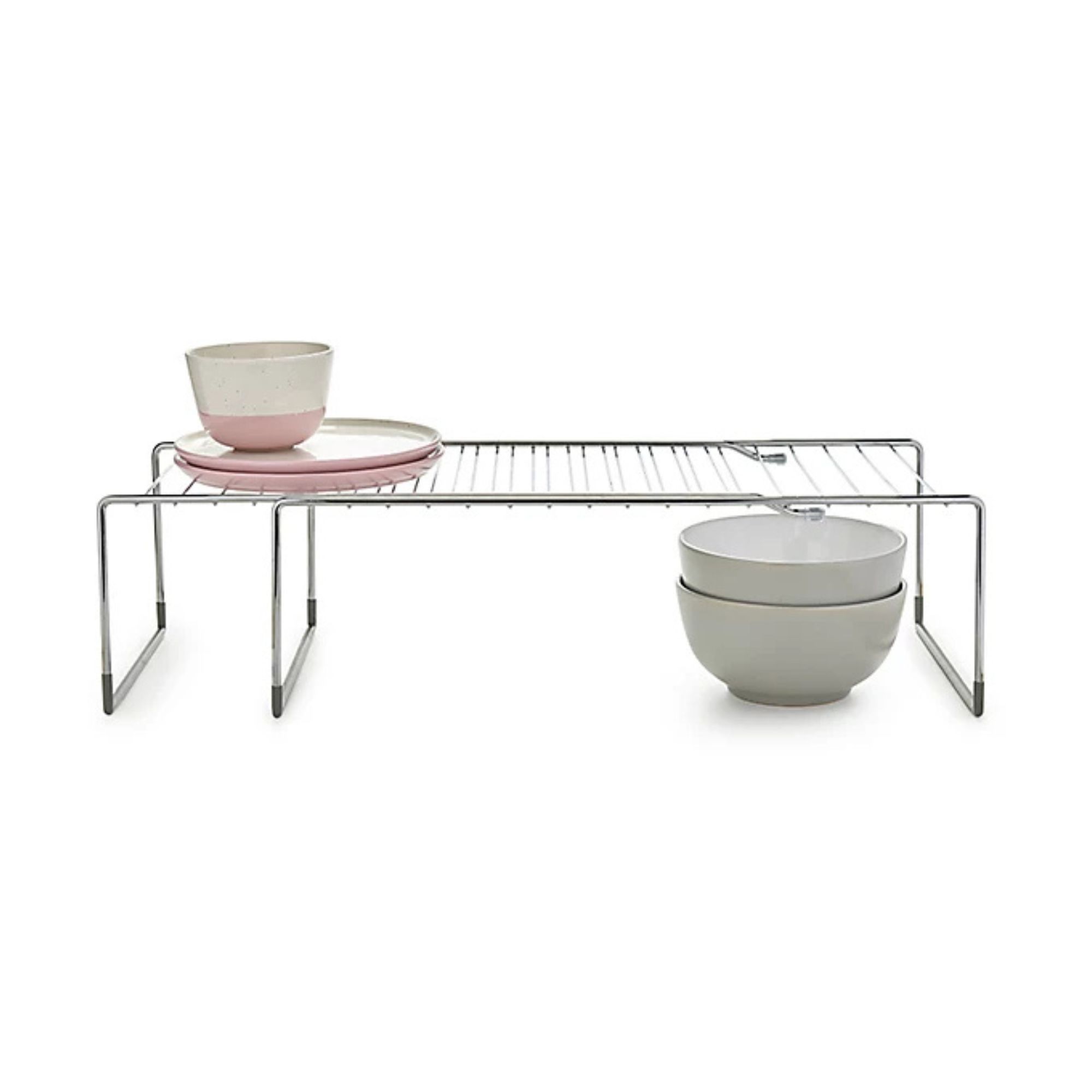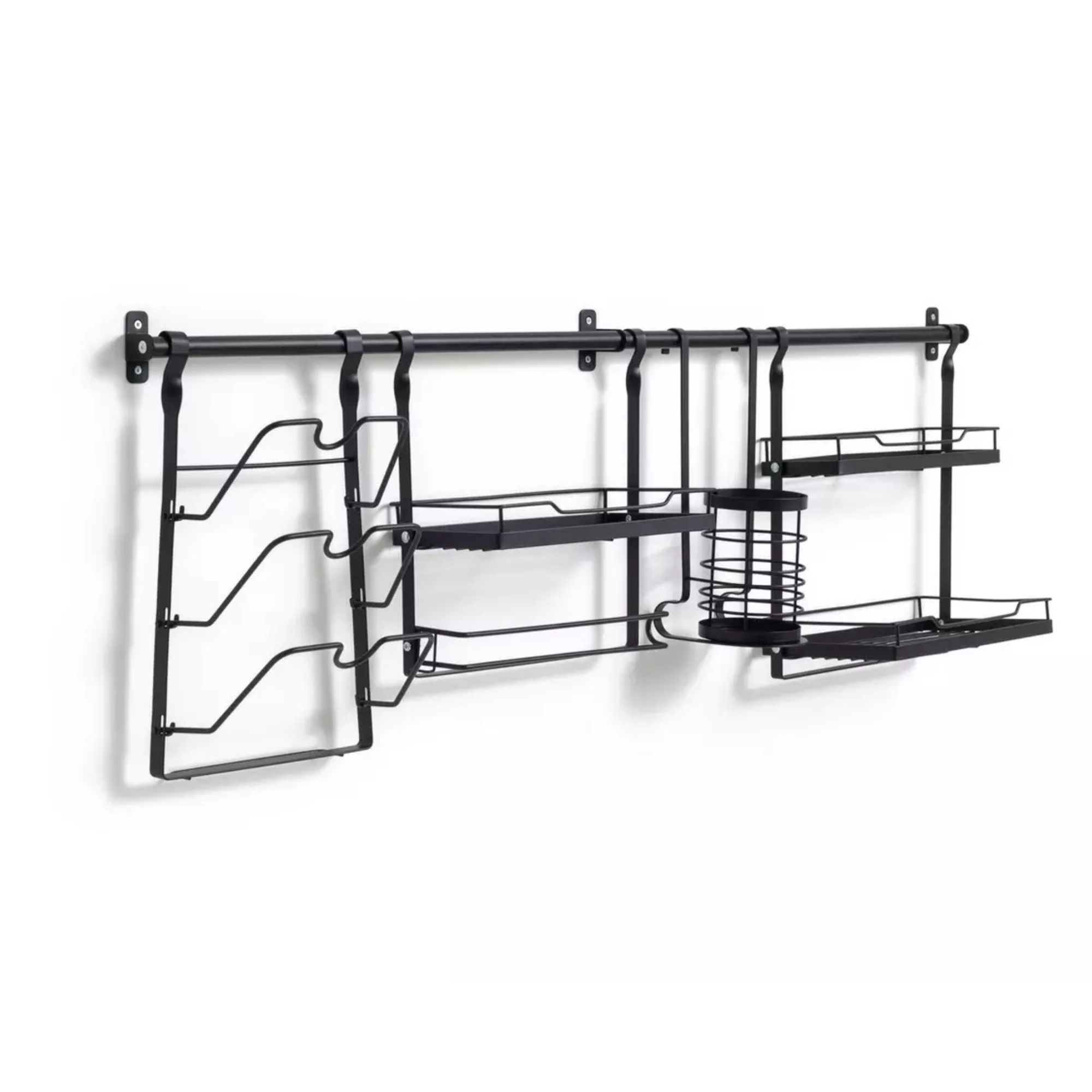‘People with tidy cupboards don’t own fewer things by accident’ – these are the 6 things you need to avoid to keep your kitchen cupboards clutter-free
People with tidy kitchen cupboards *never* do these things

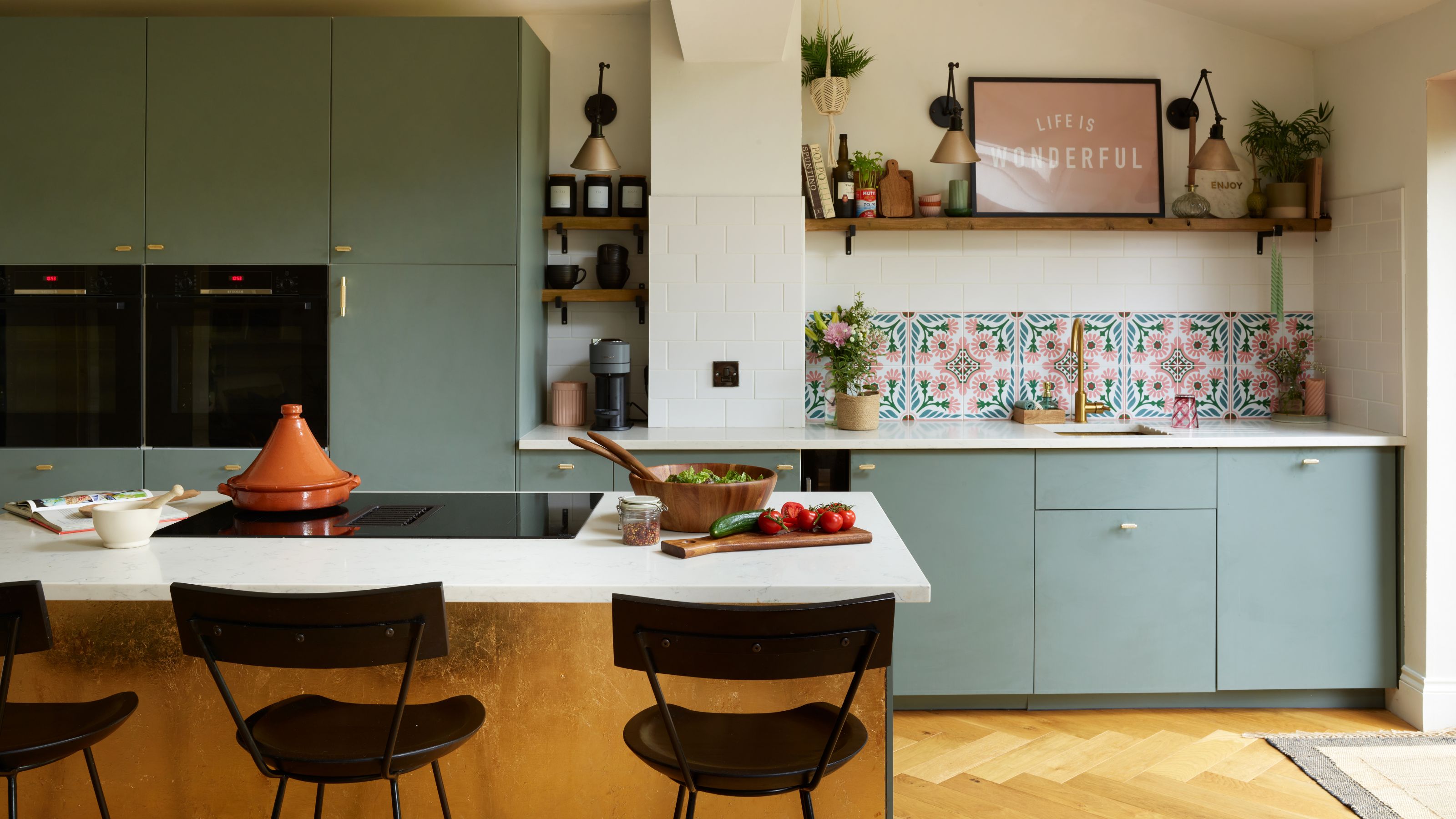
My kitchen cupboards have always been the bane of my existence. In the past, I couldn’t open them without something falling on the floor, and they always seemed to be overflowing and messy. But then I asked professional organisers what things people with tidy kitchen cupboards never do, and quickly realised where I was going wrong.
Of course, it isn’t hard to find tips and tricks on organising kitchen cabinets, but I’m the kind of person who learns from what doesn’t work - and I often find that by first making mistakes and then learning from them, I can create a more functional, efficient, and clutter-free home. And this is especially important in the kitchen.
That’s why I wanted to hear from the experts, who spend their days helping clients clean and organise their homes, what people with tidy kitchen cupboards never do in order to keep their cooking space clean and clutter-free. And now that I’ve stopped doing them myself, I can honestly say they’ve made a huge difference.
1. Holding onto unnecessary appliances
If you have limited kitchen counter space - or you just don’t like to have your appliances on show - there’s a high chance that you keep them in your cupboards. But when was the last time you culled them? After all, people with tidy kitchen cupboards will never hold onto unnecessary kitchen appliances and tools.
Ingrid Jansen and Lesley Spellman from The Declutter Hub say, ‘People with tidy cupboards don’t own fewer things by accident, they’ve just learned to let go of the things that no longer serve them. That means packing off the second spiraliser, recycling the third garlic press, and recycling the out-of-date spice jars that never get used.’

They add, ‘They’ve also learned how not to keep things out of guilt, or ‘just in case’. Even if it’s an expensive juicer that was only used once, or the dinner service that’s never been out of the box.’ And by clearing up this space, you’ll be left with much tidier kitchen cupboards.
Thankfully, there are so many ways to dispose of small kitchen appliances, and you can often make some money in the process. In fact, some retailers will give you a discount or a voucher when you trade in your old appliances, and Currys is the latest retailer to offer such a scheme.
Sign up to our newsletter for style inspiration, real homes, project and garden advice and shopping know-how
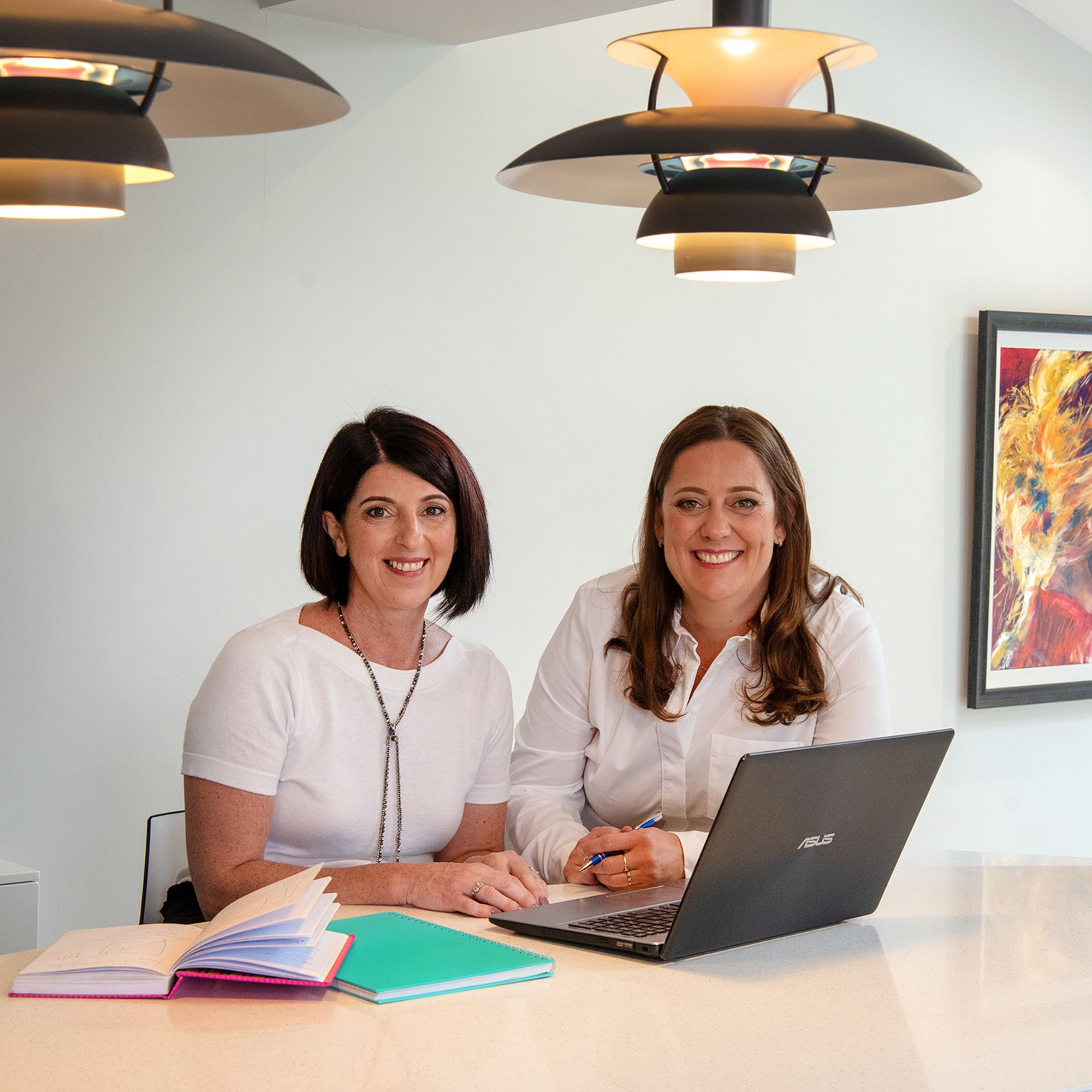
Ingrid Jansen and Lesley Spellman are the UK’s leading authority on decluttering and organising your home as The Declutter Hub, which boasts a top one percent podcast with more than 2.5 million downloads, and a Facebook community of 60,000 members. Their bestselling Bloomsbury Publishing book - Reset Your Home, Unpack Your Emotions And Your Clutter, Step By Step is out now.
2. Using low-level cupboards for non-essentials
Most kitchens have a mixture of both high-level and low-level cupboards, and one thing people with tidy kitchen cupboards never do is use the lower-level for non-essentials - especially if you’re looking to store pots and pans in a small kitchen.
This is echoed by Henrique Conceicao, Area Manager of Total Clean, who says, ‘One mistake I see all the time is storing things where they don’t get used. If your most-used pans or spices are stuck at the back of a high cupboard, you’ll always end up rummaging.’ This will then undoubtedly lead to messy, unruly cupboards that stress you out every time you open them.
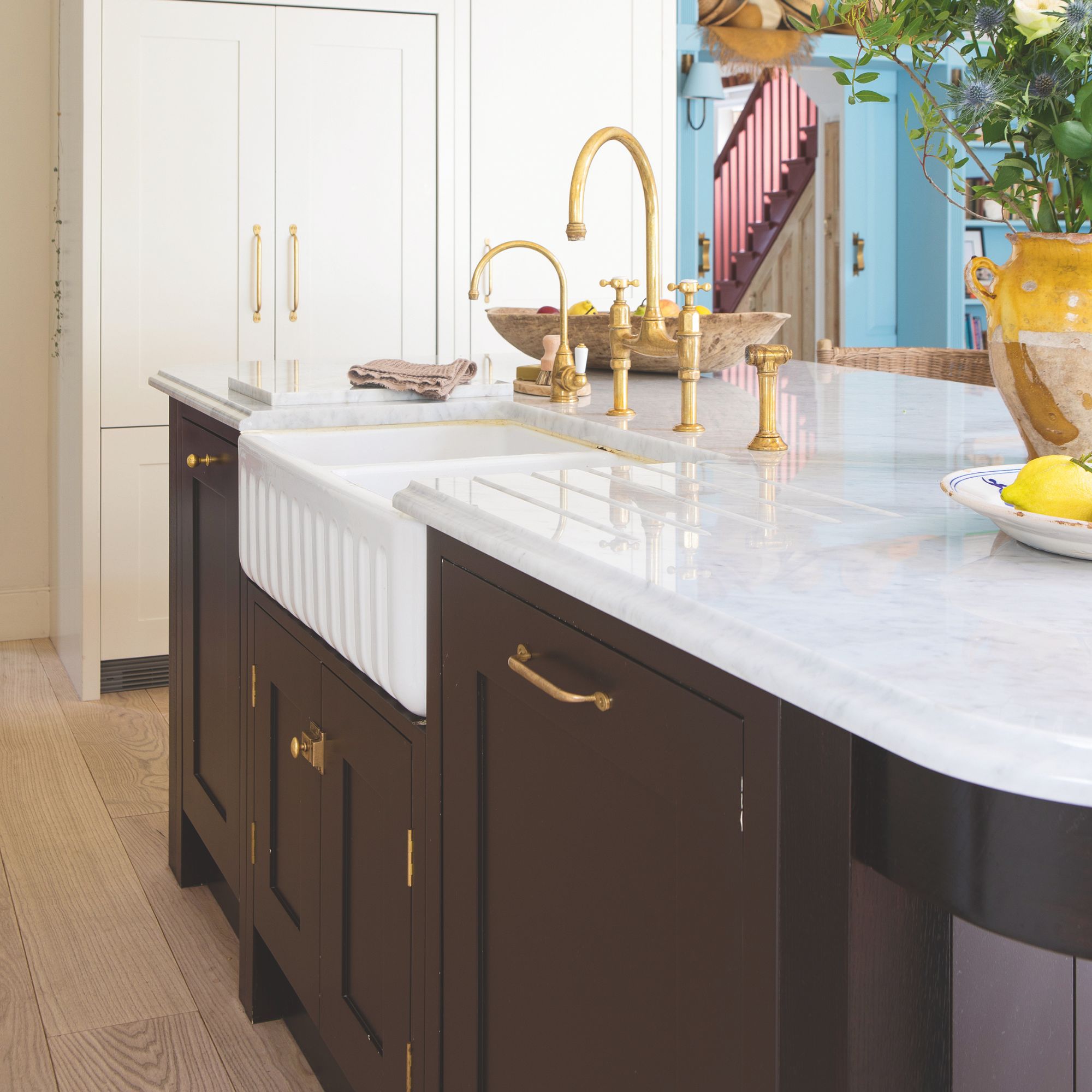
So, you need to be a little more strategic with how you organise your kitchen cupboards. Josie Medved, Design Manager at Symphony and Laura Ashley Kitchens, suggests, ‘Think about storing the most used items within easy reach. Everyday essentials like mugs, plates and cooking oils should be kept at eye level, while occasional-use pieces such as baking trays or festive dishware can be stored higher up.’
If you want to take things one step further, you can categorise the cupboard into smaller sections so that everything has its place. Using storage organisers to do this can make this easier, and opting for ones with handles - like these Changshengda Fridge Storage Organisers (6 Pack), £16.99 at Amazon, are particularly handy for getting things in and out of your tidy cupboards without disrupting everything else in there.
3. Ignoring the extra (and free!) space
People with messy kitchen cupboards often cram as much as they can into the main area of the cupboard, ending up with piles of packets, cracked glasses, and a whole jumble of unorganised ‘stuff’ lying on top of each other. But people with tidy kitchen cupboards realise that there’s a whole load of extra (and free) cupboard space to make the most of.
Typically, the doors and the tops of cupboards are dead space, but they don’t have to be. And as Josie says, ‘Don’t forget about the inside of cupboard doors. These can be cleverly utilised to hold pan lids, measuring spoons or cling film dispensers.’ The same can be said for underneath any shelves in a cupboard, too.
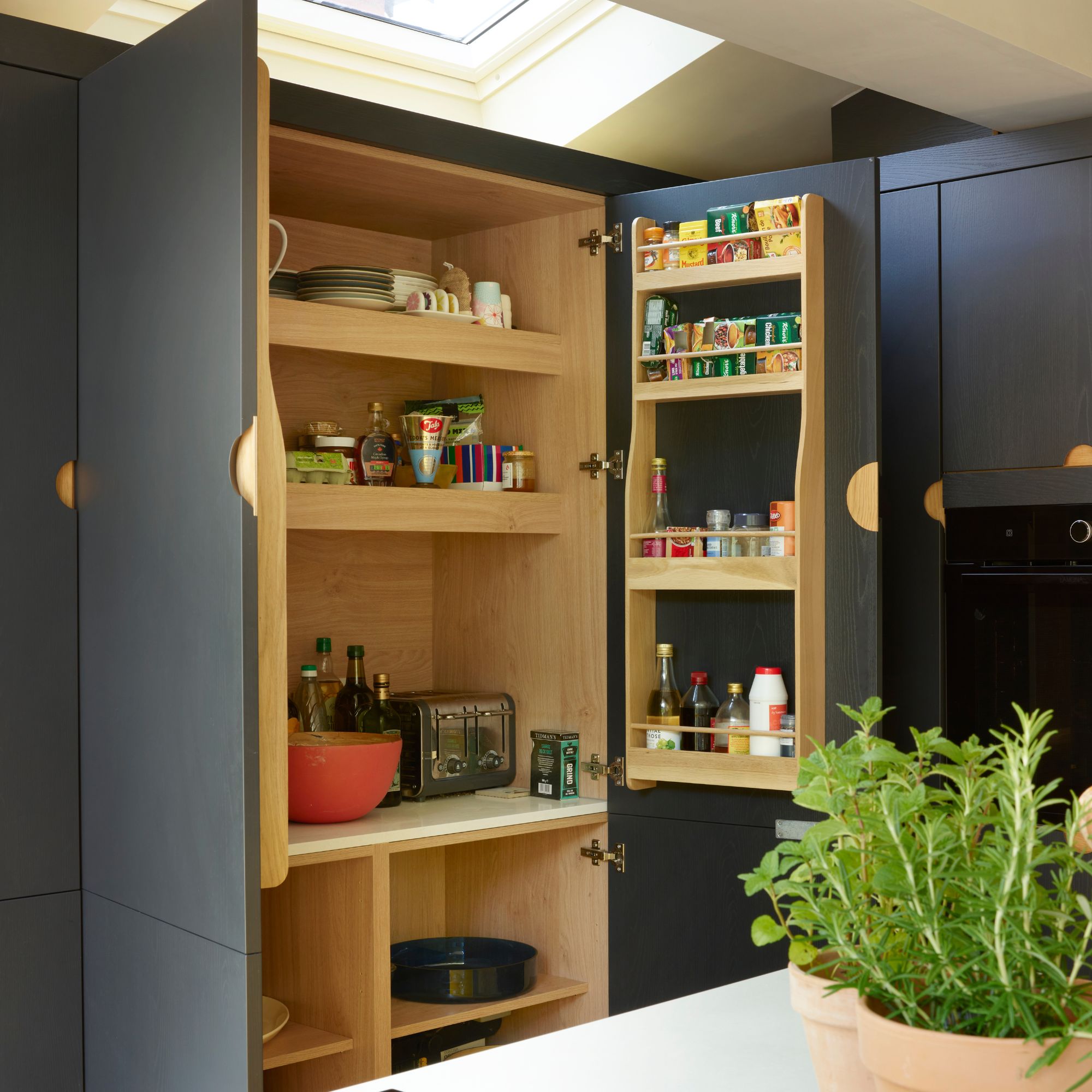
In fact, our Kitchens Editor, Holly, recently doubled the storage space in her cupboards by using Joseph Joseph CupboardStore Organisers, but there are so many other solutions out there that ensure you don’t ignore this extra space again.
For example, one of the best ways to store glasses in a cupboard is to hang them, so you could also make the most of organisers like this Under Cabinet Stemware Wine Glass Hanger Rack Holder, £14.99 at Amazon, to both keep them safe and make the most of dead space if you have a shelf in your cupboards.
4. Keeping food in original packaging
Food comes in so many different types of packaging, from jars and tins to bags and packets, and trying to organise this in kitchen cupboards can often feel like a game of Jenga that you’re just never going to win. That’s why most people with tidy kitchen cupboards never keep their food in its original packaging.
Instead, you should make the most of pantry storage organisation ideas and decant what you can into storage containers instead. Not only will they look better in your cupboard, but they will also allow you to keep track of how much you have left and allow you to stack them neatly on top of one another.
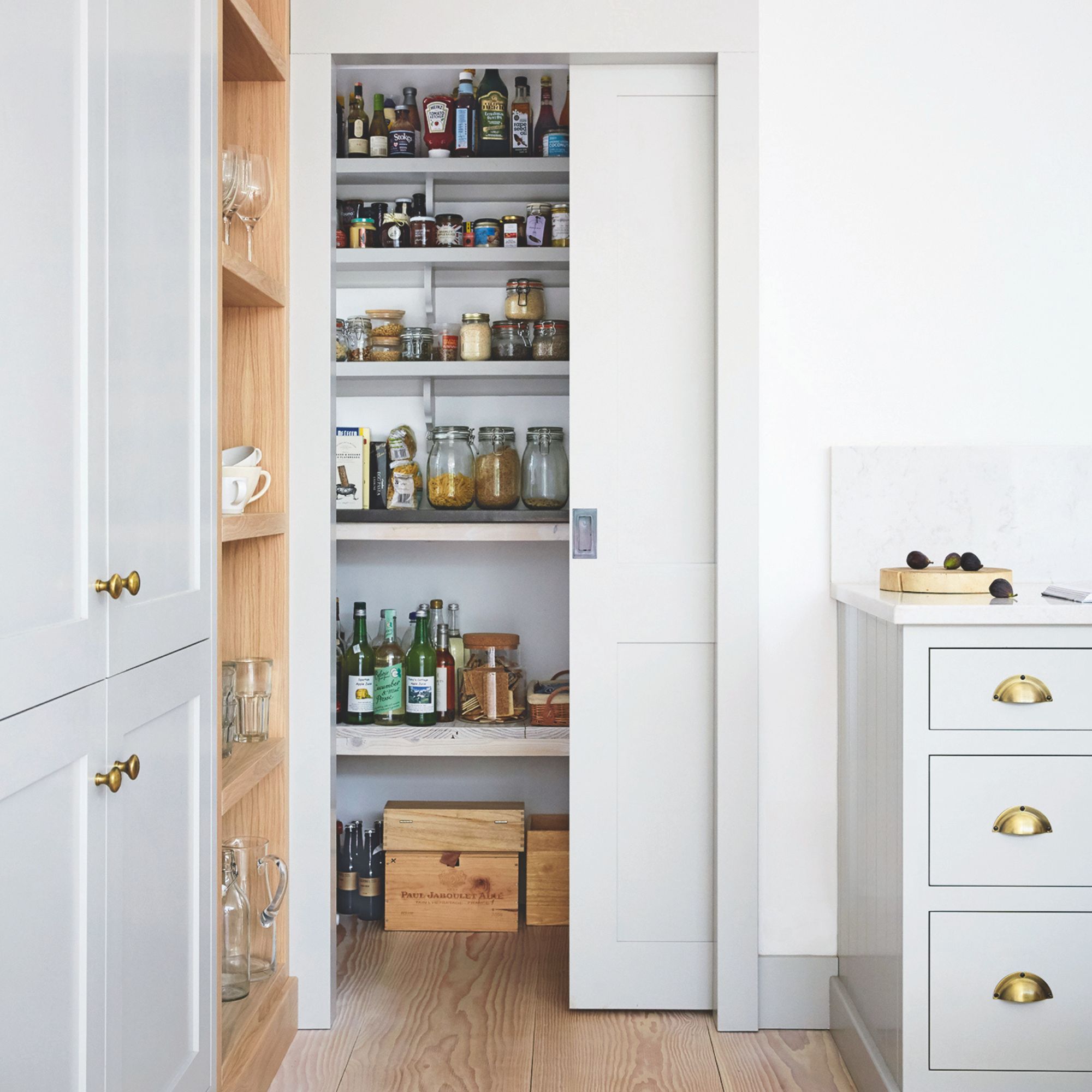
Jane Lee, an award-winning professional organiser, home stager and founder of Jane Lee Interiors, encourages all of her clients to ditch original packaging in favour of containers, too. She says, ‘Decant dried foods like nuts, seeds, teabags and coffee into identical coffee jars: there’s something very satisfying about opening a drawer or door and seeing neat rows, instead of a jumble of loose packets.’
If you’re conscious of your health and the environment, however, it’s best to avoid plastic containers in favour of glass ones. Our writer, Katie, recently did this and will never look back. And while the glass containers may cost you in the short term, they’ll last for years and definitely pay off in the long term.

Jane Lee is an award-winning professional organiser and home stager and founder of Jane Lee Interiors. She works 1:1 with clients across Sussex and online throughout the UK, easing them through the potentially stressful process of decluttering, organising and – if they’re selling – showing them how to present their home to entice more buyers. Jane was Organiser of the Year in 2023 (Clean & Tidy Awards) and is a member of the UK Home Staging Association.
5. Buying multiples of the same thing
While it’s always handy to have spare plates and cutlery for hosting, the same can’t be said for food items. And another thing people with tidy kitchen cupboards never do is buy multiples of the same thing - even if you spot an offer that looks too good to pass up.
Ingrid and Lesley agree, saying, ‘Don’t over-buy items - especially if they’re on offer. It’s one of the biggest causes of clutter. If you haven’t got space for bulk buys or you’re constantly creating overflow shelves, look at buying less - only what fits in your cupboard. You can only use one item at a time!’
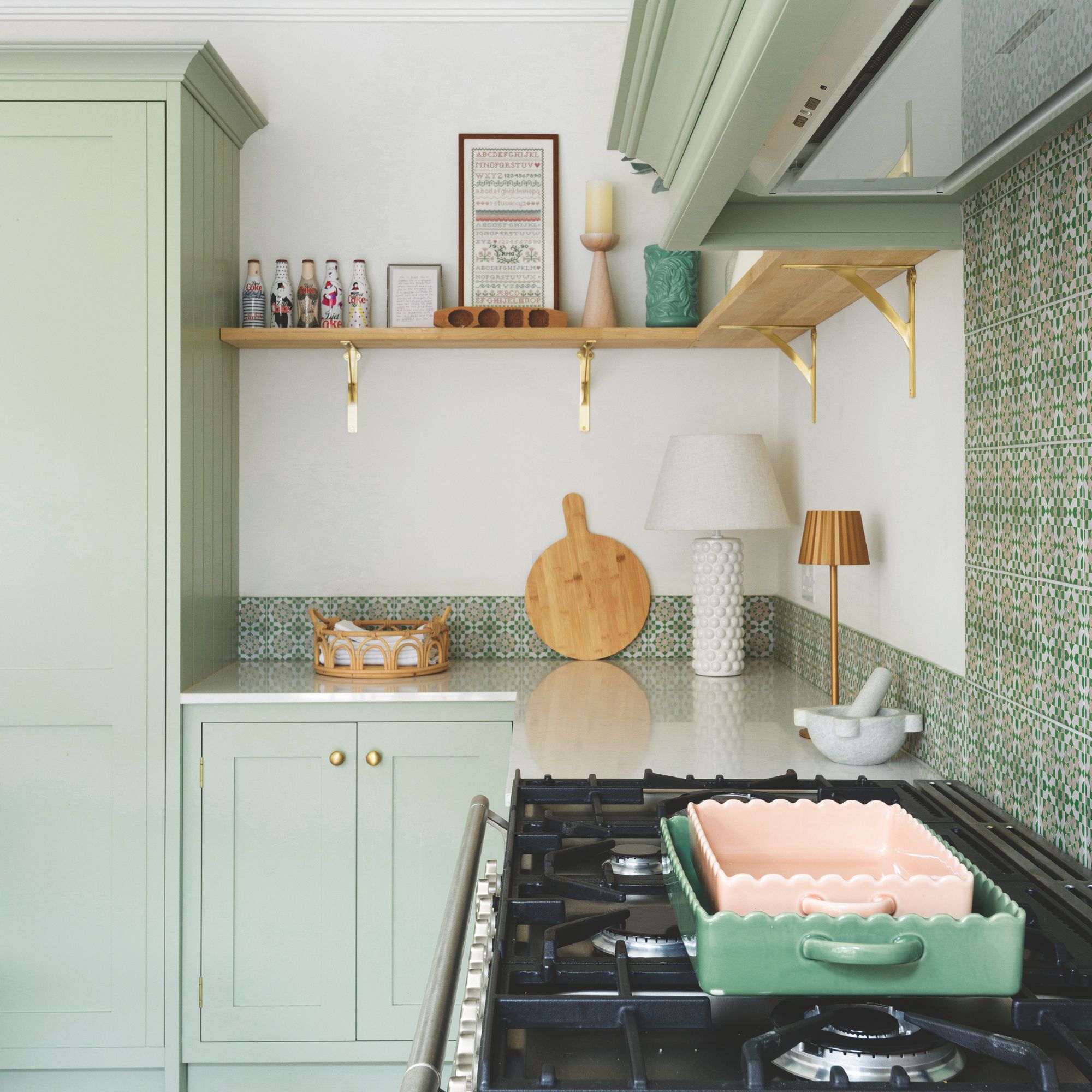
You’ll find that by buying only what you need, your cupboards will stay neater and will be easier to manage. This way, you’ll know exactly what you have in the cupboards and when you need to restock during your supermarket shop.
You may even find that you save money by steering clear of these offers, as you’ll be able to eat all of your food items before they go out of date and avoid having to throw them away unnecessarily.
6. Keeping non-kitchen items in the kitchen
Hands up if your ‘junk drawer’ is in the kitchen? You’re not alone. Most people keep a drawer or cupboard full of those things-you-need-every-so-often items like scissors, batteries, sticky tape and pens in the kitchen. However, they shouldn’t be there.
People with tidy kitchen cupboards know not to keep non-kitchen items in the kitchen, as the kitchen is typically one of the smallest rooms in the house, but it’s also often the room that requires every inch of storage available. So, it might be time to move it.
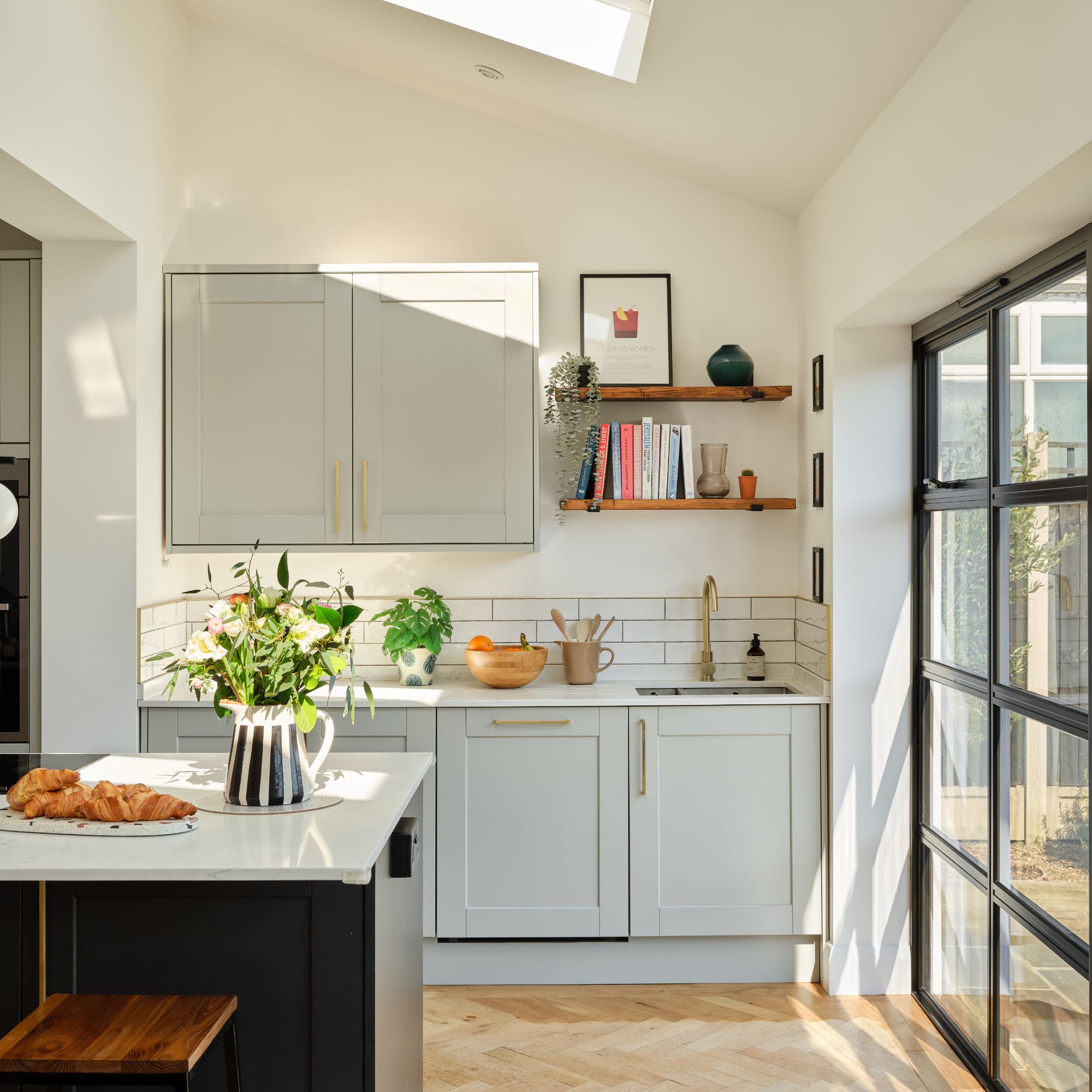
Your first port of call should be to declutter your junk drawer and get rid of the things that you no longer need. Then, you can relocate it elsewhere. Try to keep it in the centre of your house for when you need it, though. Your living room could be a good location for your junk cupboard.
Alternatively, if you have a hallway or entryway, you could opt for a small-space storage option like this Lancaster Shoe Storage Cabinet, £99 from Dunelm, which comes with a drawer for all of the little bits and bobs you need to keep.
What to shop
FAQs
Where to put plates and glasses in the kitchen?
As it’s likely that you’ll use plates and glasses on a daily basis, you need to put them somewhere that’s within easy reach. Avoid putting them on the top shelf or in the top cupboard of your kitchen, as this could result in breakages.
Instead, opt for putting plates and glasses in lower-level cupboards - ideally near either the sink or the dishwasher. This way, you’ll be able to quickly put them away when they’re clean and dry, too.
What to put in bottom kitchen cabinets?
You should aim to put the following in bottom kitchen cabinets:
- Everyday essentials you can get out in seconds
- Pots and pans
- Heavier food items
- Bulkier appliances you may struggle to carry
- Cleaning products
So, those are the 6 things people with tidy kitchen cupboards never do! And if you do any of those things, it might be time to rethink your methods.

Lauren Bradbury has been the Content Editor for the House Manual section since January 2025 but worked with the team as a freelancer for a year and a half before that. She graduated with a Bachelor’s degree in English and Creative Writing from the University of Chichester in 2016. Then, she dipped her toe into the world of content writing, primarily focusing on home content. After years of agency work, she decided to take the plunge and become a full-time freelancer for online publications, including Real Homes and Ideal Home, before taking on this permanent role. Now, she spends her days searching for the best decluttering and cleaning hacks and creating handy how-to guides for homeowners and renters alike, as well as testing vacuums as part of her role as the Ideal Home Certified Expert in Training on Vacuums, having spent over 110 hours testing different vacuum models to date!

